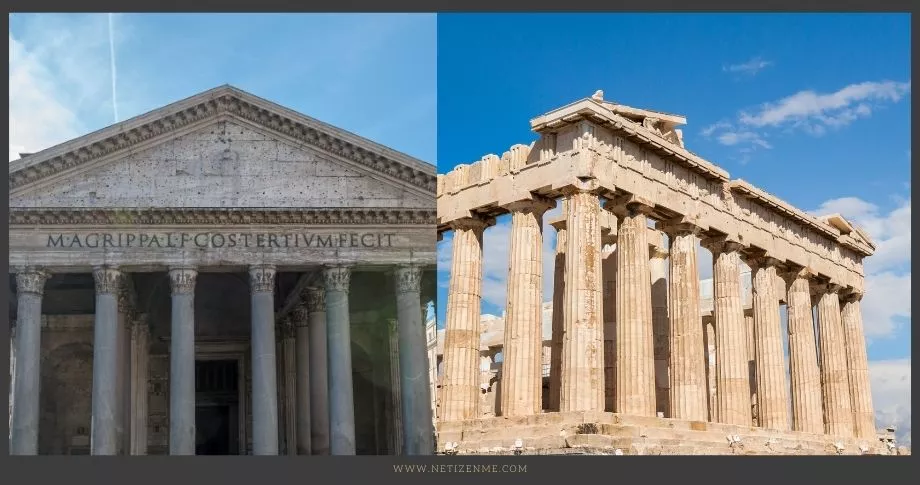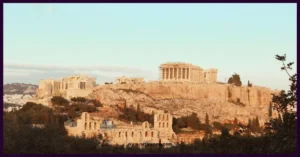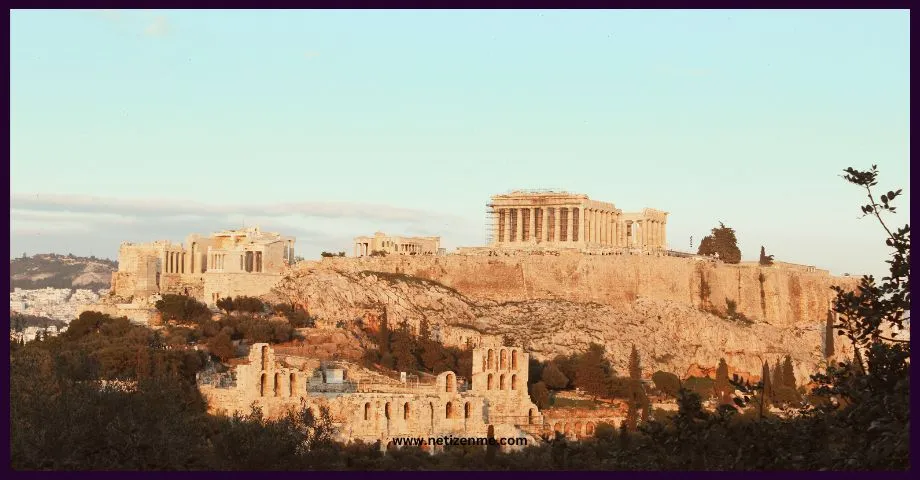
Comparison of the Parthenon and the Pantheon
The Pantheon in Greece and Rome
The Parthenon in Athens and the Pantheon in Rome are architectural wonders. This is a Comparison of the Parthenon and the Pantheon.
The Greek Pantheon (Parthenon)
The construction of the Pantheon structure in ancient Greece started in 447 BC during the Athenian era which it was inspired from. The then ruler, Perikles charged with the task of shaping the Pantheon’s purpose into a symbol of influence and power which reflected his reign.
It is said that the project was also preceded by the event of a peace treaty with the city of Persia. This later went on to signify the unification of the Athenian Empire and the Delian Defense League, although with a compromise that Athens now had imperial rule over all Greek states.
This Pantheon also reflects the achievements of many Greek gods and their descendants through special features and spiritual associations. These two buildings are architectural wonders of ancient world powers. In fact, if observed closely, the similarities and differences between ancient Greece and Rome can be noted.
The Roman Pantheon
The Roman Pantheon is truly an architectural wonder. It is one of the most influential and well-preserved buildings in the world. There are indications that this structure was built and finished by AD 125. The building has its share of influence and significance on the impact of art and historical culture. There shouldn’t be any surprise that it is also considered to be one of the eighth wonders of the world.
It was built by Emperor Hadrian for replacing a precedent structure of a Roman commander. Since then, it has been passed on throughout history and has been used as a church or a temple for the worship of gods and deities. Another magical power of the building is the existing brick stamps which may then explore the history of its idea has been that of another Emperor in the name of Trajan.
Comparison of the Parthenon in Athens and the Pantheon in Rome
What are the similarities between the Parthenon and Pantheon?
to begin with, the Parthenon and Pantheon were built with a sole purpose: serving as temples to the Greek and Roman gods – the former in honour of Athena and the latter dedicated to all Greek gods. Building a temple only means one thing – both ancient world powers took their religion seriously.
These great edifices are different structures. Still, they share some similarities in design – they are high-rising buildings (classical architecture) with strong columns and have been in existence for centuries now. The design and longevity of these architectural phenomena show the architectural brilliance of both former empires.
What is the difference between Pantheon and Parthenon?
The Parthenon and the Pantheon would make it to any list of the most famous temples ever built, but they were constructed in different centuries. The Parthenon was built first, around 447 BC – 432 BC (01) while the Pantheon was built six centuries later between 126 – 128 AD (02).
Another major difference lies in observing both structures as a whole. The pantheon was constructed as a domed rotunda with a portico with large, tall columns attached to it at the front. The Parthenon on the other hand is a Doric peripteral temple with ionic features.
Carrying out an in-depth observation of both edifices, the Pantheon appears to be a more sophisticated structure than the Parthenon suggesting the Romans were architecturally more advanced than the Greeks.
References for further reading:
- Parthenon. Reed.edu. (2020). Retrieved 16 September 2020, from (URL).
- Ranogajec, P. (2020). (URL) – Smarthistory. Smarthistory.org. Retrieved 16 September 2020
- (URL)
- How Did Geography Affect the Indian Ocean Trade Routes?

- A Comparative Analysis of the Parthenon and Maison Carrée

- Silk Road’s Impact: Catalyst for Technological Advancements

This article is written by:
Our professional writers and editors are passionate about sharing high-quality information and insights with our audience. We conduct diligent research, maintain fact-checking protocols, and prioritize accuracy and integrity to the best of our capacity.
You can cite our articles under the author name "Netizenme"







